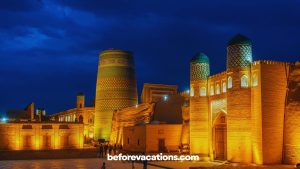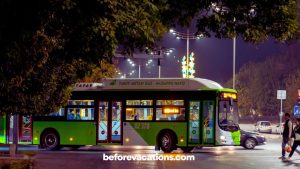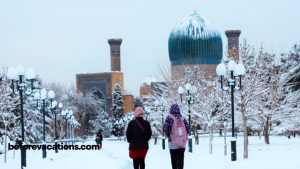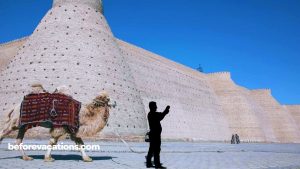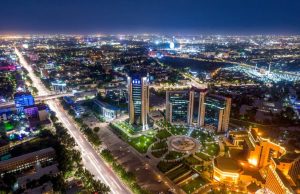Imagine a journey through Japan where ancient traditions meet modern marvels, and culinary delights await at every turn. This is the essence of the Kansai region, a vibrant heartland that offers a profound and diverse experience of Japanese culture, history, and urban dynamism. Home to three of Japan’s most captivating cities—Kyoto, Osaka, and Nara—Kansai provides a rich tapestry for travelers.
You can wander through serene temples in Kyoto, savor world-class street food in Osaka, and encounter friendly deer in Nara. This region allows you to witness centuries of heritage while experiencing the lively pulse of contemporary Japan. This comprehensive guide will help you navigate Kansai, ensuring your trip to Kyoto, Osaka, and Nara is filled with unforgettable moments and authentic discoveries. Prepare to delve into a region that truly encapsulates the diverse spirit of Japan.
Why Exploring the Kansai Region Offers Japan’s Best
Exploring the Kansai Region offers an unparalleled immersion into Japan’s soul. It presents a remarkable contrast to the fast-paced energy of Tokyo. Kansai blends deep historical roots with a distinctive modern identity. This area served as Japan’s cultural and political capital for over a millennium. This rich history means every city, town, and even small village here breathes tales of emperors, samurai, and artistic innovation. Beyond its historical significance, Kansai boasts a unique culinary scene, vibrant arts, and a famously warm, outgoing local character. This welcoming atmosphere makes visitors feel truly connected to the heart of Japan.
The region’s efficient transportation network, centered around the Shinkansen (bullet train) and extensive local lines, makes multi-city itineraries seamless. You can easily transition from Kyoto’s tranquil bamboo groves to Osaka’s bustling Dotonbori in minutes. Then, a short ride brings you to Nara’s ancient temples and roaming deer. This ease of travel allows for diverse experiences packed into a single trip. It also builds strong internal linking for your travel planning. This makes Kansai an ideal choice for travelers seeking both cultural depth and urban excitement, all within easy reach.
Kyoto: Japan’s Timeless Heart
Kyoto, with its ancient temples, traditional geisha districts, and serene Zen gardens, embodies classical Japan. This city, the imperial capital for over a thousand years, offers a profound journey into the nation’s rich past and enduring cultural traditions. Every street corner seems to whisper stories of emperors and artisans.
Immerse Yourself in Kyoto’s Sacred and Scenic Wonders
Kyoto boasts over 2,000 temples and shrines, along with numerous tranquil gardens. Each offers a unique window into Japanese spirituality and aesthetics.
- Kinkaku-ji (Golden Pavilion): This UNESCO World Heritage site mesmerizes with its top two floors covered in glittering gold leaf. It perfectly reflects in the surrounding pond. Visit early in the morning for fewer crowds and magical reflections. The structure symbolizes the Pure Land Buddhist paradise. It showcases a blend of architectural styles from different eras. Its meticulous reconstruction after a 1950 fire underscores Japan’s dedication to preserving cultural treasures.
- Fushimi Inari-taisha Shrine: Famous for its thousands of vibrant orange torii gates. These gates snake up a sacred mountain. This iconic shrine is dedicated to Inari, the Shinto god of rice. Walking through the tunnel of gates is an immersive, spiritual experience. Each gate is donated by an individual or company. This creates a powerful sense of collective devotion. The paths offer various viewpoints and smaller shrines, inviting deeper exploration and peaceful contemplation.
- Arashiyama Bamboo Grove: North of Kyoto, Arashiyama offers a captivating journey through towering bamboo stalks. The rustling sound of the bamboo in the breeze is designated as one of Japan’s “100 Soundscapes.” Pair this with visits to nearby Tenryu-ji Temple, a UNESCO site with a beautiful Zen garden, and Okochi Sanso Villa, the serene former estate of a film actor, for a truly immersive experience of nature and artistry.
- Gion District: Kyoto’s most famous geisha district. Here, traditional wooden machiya houses line narrow streets. Lantern-lit evenings offer a chance to spot geiko (Kyoto geisha) or maiko (apprentice geisha) on their way to appointments. Explore traditional teahouses and enjoy the historic atmosphere. Respect local customs and privacy when observing.
- Kiyomizu-dera Temple: Perched on a hillside, this magnificent wooden temple offers breathtaking panoramic views of Kyoto. Its main hall, built without a single nail, extends over a cliff. The Otowa Waterfall, flowing beneath the main hall, is believed to grant wishes. This UNESCO site provides a deeply spiritual experience and stunning vistas, especially during cherry blossom and autumn foliage seasons.
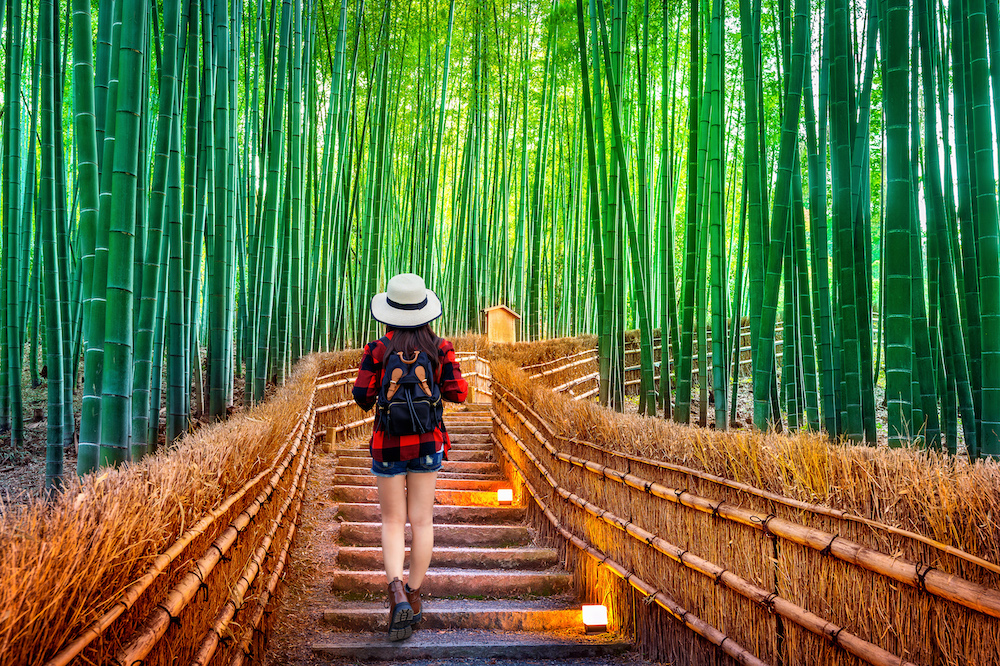
Culinary Delights and Cultural Immersions in Kyoto
Kyoto’s culinary scene is as refined as its cultural heritage. It offers everything from exquisite multi-course kaiseki meals to comforting street food.
- Kyoto Cuisine (Kyo-ryori): Experience the elegance of kaiseki, a traditional multi-course dinner. It emphasizes seasonal ingredients and artistic presentation. Alternatively, try shojin ryori, traditional Buddhist vegetarian cuisine, especially at temple restaurants.
- Nishiki Market: Known as “Kyoto’s Kitchen.” This vibrant, narrow street market offers an incredible array of fresh produce, seafood, pickled goods, and unique snacks. It’s a fantastic place to sample local delicacies and soak in the bustling atmosphere.
- Tea Ceremony: Participate in a traditional Japanese tea ceremony. This ritual offers insight into mindfulness and Japanese aesthetics. Many cultural centers and temples offer this authentic experience.
- Omi-Maiko Beach: For those seeking a refreshing reprieve from the urban intensity, a tranquil oasis lies just a short journey away: Omi-Maiko Beach. This scenic and pristine lakeside destination on Lake Biwa, Japan’s largest freshwater lake, provides an ideal escape from the city’s summer climate, offering a perfect spot for sunbathing, swimming, and beach barbecues.
Osaka: Japan’s Unapologetic Foodie Capital
Osaka, known as “Japan’s Kitchen,” offers a vibrant contrast to Kyoto’s tranquility. This bustling metropolis is famous for its lively atmosphere, incredible street food, and modern entertainment. Osaka truly embraces its identity as a city that lives to eat, with a friendly, down-to-earth vibe that instantly makes visitors feel at home.
Osaka’s Iconic Sights and Electrifying Energy
Osaka’s attractions blend historical landmarks with futuristic entertainment. This creates a city that is constantly in motion.
- Dotonbori: The pulsating heart of Osaka. This entertainment district mesmerizes with its dazzling neon lights, giant animated billboards (like the Glico Running Man), and an endless array of street food stalls and restaurants. It’s a sensory overload in the best possible way. Take a leisurely stroll along the canal. Sample local specialties like takoyaki (octopus balls) and okonomiyaki (savory pancakes). The vibrant energy here is infectious.
- Osaka Castle: A magnificent landmark steeped in history. This iconic castle played a pivotal role in Japanese unification. The current reconstruction boasts a museum inside. It offers stunning city views from its top floor. The surrounding park is beautiful, especially during cherry blossom season. It provides a peaceful retreat from the city bustle.
- Shinsekai District: A nostalgic glimpse into Osaka’s past. This retro district is famous for its Tsutenkaku Tower and colourful, slightly dilapidated charm. Explore its quirky shops, enjoy traditional Kushikatsu (deep-fried skewers), and soak in the unique, old-school atmosphere. It’s a dive into authentic Osaka.
- Universal Studios Japan: For thrill-seekers and pop culture enthusiasts, Universal Studios Japan offers world-class rides and attractions, including The Wizarding World of Harry Potter and Super Nintendo World. It provides a full day of entertainment for families and friends.
- Umeda Sky Building: This iconic architectural marvel offers a spectacular vantage point. Its “Floating Garden Observatory” provides 360-degree panoramic views of Osaka’s sprawling cityscape. Visit at sunset for a breathtaking transition from day to night.

Osaka’s Legendary Food Scene: A Gastronomic Adventure
Osaka’s reputation as a foodie paradise is well-earned. The city prioritizes delicious, accessible food.
- Street Food Extravaganza: Your visit to Osaka isn’t complete without indulging in its famous street foods. Takoyaki (crispy octopus balls with a soft, creamy interior), okonomiyaki (savory pancake often filled with cabbage, meat, and seafood), and kushikatsu (deep-fried skewers) are absolute must-tries.
- Kuromon Ichiba Market: Known as “Osaka’s Kitchen” (not to be confused with Nishiki in Kyoto). This bustling public market offers an incredible variety of fresh seafood, local produce, and ready-to-eat street snacks. It’s a vibrant place to explore and sample.
- Michelin-Starred Dining: Beyond street food, Osaka boasts an impressive number of Michelin-starred restaurants. They range from traditional Japanese cuisine to innovative international fare. This caters to all palates and budgets.
Nara: A Serene Escape to Ancient Capitals
Just a short, easy day trip from both Kyoto and Osaka, Nara offers a tranquil escape into Japan’s ancient past. As Japan’s first permanent capital, it is brimming with UNESCO World Heritage sites and famously, friendly wild deer that roam freely through its sprawling park. Nara offers a unique blend of historical grandeur and whimsical charm.
Encountering Deer and Divine Temples in Nara
Nara’s main attractions are conveniently located within or around Nara Park, making it incredibly accessible for exploration on foot.
- Nara Park and its Deer: Home to over a thousand wild sika deer. These deer are considered messengers of the gods. They roam freely throughout the park, often bowing to visitors in exchange for special deer crackers (shika senbei), available for purchase from vendors. Interacting with these gentle creatures is a highlight for many visitors.
- Todai-ji Temple: The park’s most impressive landmark. Todai-ji houses a colossal 15-meter-tall bronze Buddha statue (Daibutsu). The temple’s main hall, Daibutsuden, is the largest wooden building in the world. Its sheer scale and the spiritual presence of the Daibutsu are awe-inspiring. This UNESCO World Heritage site is a powerful symbol of Buddhist influence in ancient Japan.
- Kasuga Taisha Shrine: A beautiful Shinto shrine famous for its thousands of bronze and stone lanterns. These lanterns are donated by worshippers and illuminate the pathways during special festivals. The shrine is nestled within a primeval forest, offering a serene and mystical atmosphere. Deer often wander around the shrine grounds.
- Kofuku-ji Temple: Another UNESCO World Heritage site within Nara Park. Kofuku-ji features a prominent five-story pagoda, which is Nara’s most recognizable symbol and the second tallest in Japan. The temple complex houses various important Buddhist structures and treasures.
- Isui-en Garden: A stunning traditional Japanese strolling garden. Located near Todai-ji, it incorporates “borrowed scenery” from the surrounding mountains and temple structures. It offers a tranquil retreat with meticulously maintained ponds, pathways, and teahouses.

Nara’s Culinary and Craft Traditions
While famous for its deer and temples, Nara also offers distinct culinary and craft experiences.
- Mochi Pounding: Witness the energetic spectacle of mochitsuki (mochi pounding) at Nakatanidou, a famous shop near Nara Park. Freshly pounded mochi, soft and warm, makes for a delightful snack.
- Persimmon Leaf Sushi (Kakinoha-zushi): A local specialty of Nara. This type of sushi features vinegared rice topped with mackerel or salmon, wrapped in a persimmon leaf for preservation and flavor. It offers a unique taste of regional cuisine.
- Sake Tasting: Nara is considered the birthplace of sake brewing. Explore local sake breweries and taste different varieties of this traditional Japanese rice wine.
Planning Your Kansai Adventure: Essential Tips for Seamless Travel
Exploring the Kansai Region is an incredible experience, and a few key tips will help you make the most of your journey through Kyoto, Osaka, and Nara.
Getting Around Kansai
The Kansai region boasts an incredibly efficient and interconnected transportation network.
- Train (JR & Private Lines): This is the primary mode of transport. The JR Tokaido/Sanyo Shinkansen connects Kyoto and Osaka to other major cities in Japan. Local JR lines (e.g., JR Nara Line from Kyoto to Nara) and various private railway lines (e.g., Hankyu, Keihan, Kintetsu) offer excellent, frequent connections between Kyoto, Osaka, and Nara. Consider purchasing a JR Pass if your itinerary extends beyond Kansai, or a Kansai Area Pass or Kansai Thru Pass for regional travel within Kansai.
- Buses: Within each city, extensive bus networks cover areas not easily reached by train or subway. Kyoto, in particular, relies heavily on its bus system for reaching many temples and attractions.
- Walking: The best way to explore individual districts within each city. Many of Kyoto’s temples are walkable from major stations, and Nara Park is perfect for exploring on foot.
Best Time to Visit Kansai
Kansai is a fantastic destination year-round, with each season offering a unique appeal:
- Spring (March to April): Famous for cherry blossoms, which paint the region in delicate pinks. The weather is mild and pleasant. This is peak season, so expect crowds and higher prices.
- Autumn (October to November): Vibrant fall foliage transforms the landscapes, especially in Kyoto’s temples and Nara’s mountains. The weather is cool and comfortable. Another very popular time to visit.
- Summer (June to August): Can be hot and humid, but this is festival season! Experience iconic events like Kyoto’s Gion Matsuri and Osaka’s Tenjin Matsuri. You can also explore coastal areas.
- Winter (December to February): Colder, but generally sunny and less crowded. Enjoy peaceful temple visits, illuminated events, and a chance to experience a traditional Japanese New Year. Some areas might see light snow, adding to the charm.
Insider Tips for Exploring the Kansai Region
- Prioritize Early Morning Visits: For popular sites like Fushimi Inari or Kinkaku-ji in Kyoto, arriving right at opening time (or even before) allows for a more serene experience and better photographs before the crowds arrive.
- Wear Comfortable Shoes: You’ll be doing a lot of walking, especially in temple complexes and city districts.
- Stay Connected: Consider a portable Wi-Fi device or a local SIM card for easy navigation, translation, and sharing your experiences.
- Learn Basic Phrases: While major tourist areas have English signs, learning a few basic Japanese phrases (e.g., “Arigato” – Thank you, “Sumimasen” – Excuse me/Sorry) will greatly enhance your interactions with locals.
- Respect Local Customs: Japan has a rich culture of etiquette. Be mindful of rules in temples/shrines (e.g., removing shoes), speaking quietly in certain areas, and general politeness.
- Budget for Food: Kansai offers incredible dining. While you can eat cheaply with street food, allow budget for a few special meals to experience the local cuisine fully.
Your Kansai Adventure Awaits!
Exploring the Kansai Region – with its captivating blend of Kyoto’s ancient beauty, Osaka’s dynamic energy, and Nara’s serene charm – promises a Japanese journey unlike any other. This trifecta offers historical profundity, culinary excellence, and vibrant cultural immersion, all within easy reach. From the spiritual tranquility of a Kyoto garden to the neon glow of Dotonbori and the gentle presence of Nara’s deer, Kansai provides an experience that resonates deeply with every traveler. It encapsulates the very heart of Japan’s rich heritage and its exciting present.
Ready to uncover the diverse wonders of Kyoto, Osaka, and Nara? Start planning your ultimate Kansai adventure today and prepare for a journey that will truly captivate your senses!


